Where your favorite blogs come alive
Prehistory - Blog Posts

Some researchers think Carnotaurus used its arms to find mates and I think that’s a very cute thing they could’ve done. Have a happy Valentine’s Day everyone! ❤️🦖

I’m so happy with all the love my Silly little guy got 💛. He got so much love that he has now found a special companion to be extra silly with.

Asked my mum which dinosaur to draw and she picked the absolute icon, T-Rex
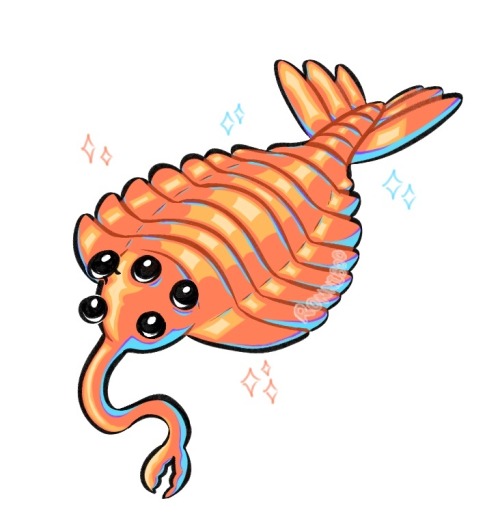
I love this silly little guy



Sean bienvenidos japoniatasarqueológicos a una nueva entrega, en esta ocasión os traigo otra noticia de arqueología de Japón la cual nos trasladaremos al periodo kofun o protohistórico (250 /592d.c) dicho esto Comencemos. - El túmulo funerario se encuentra rodeado de una doble fila de piedras, dicho túmulo se llama Koyasu y se localiza en Nakagawara Isenara, data de hace 1300 a 1400 años y pertenece al kofun tardío o protohistórico. Dicho conjunto arqueológico dispone de unos, 3600 kilómetros cuadrados aproximadamente, en la parte excavada dispone de 12 m y 14,8 de anchura se ha localizado debido a la construcción de la autopista Shin Tomei, que se localiza al margen derecho de Suzukawa al pie de la montaña Oyama se han encontrado tres dientes humanos. - Las piedras de dicho túmulo tienen distinta cantidad y tamaño, probablemente el túmulo central pertenecería a un jefe de un clan tribal y algún y el otro túmulo de menor tamaño pertenecería, pues, a alguien de la misma clase social, es decir que tuviera casi el mismo nivel social o un poco inferior al de la persona principal. - ¿De qué personaje histórico se trata? En próximas publicaciones hablaremos de este tema y aclararemos dudas sobre ellos dicho esto espero que les haya gustado y nos vamos en próximas publicaciones historia, arqueología de Japón hasta la próxima. - Welcome from Japan to a new installment, this time I bring you another archeology news from Japan which we will move to the kofun or protohistoric period (250 / 592 AD) with that said Let's start. - The burial mound is surrounded by a double row of stones, said mound is called Koyasu and is located in Nakagawara Isenara, dates from 1300 to 1400 years ago and belongs to the late or protohistoric kofun. This archaeological complex has approximately 3,600 square kilometers, in the excavated part it has 12 m and 14.8 in width, it has been located due to the construction of the Shin Tomei highway, which is located on the right bank of Suzukawa at the foot of the Oyama Mountain, three human teeth have been found. - the stones of said tumulus have different quantity and size, probably the central tumulus would belong to a chief of a tribal clan and some and the other smaller tumulus would belong, well, to someone of the same social class, that is to say, who had almost the same social level or a little lower than the main person. - What historical character is it? In future publications we will talk about this topic and clarify doubts about them, having said that, I hope you liked it and we will go in future publications history, archeology of Japan until next time.



Sean bienvenidos japonistasarqueologicos a una nueva entrega de arqueología nipona. En esta ocasión nos volvemos al periodo Jomon(1600/300 a.c), nos vamos a la prefectura de Kanagawa, a la ciudad de Hadano en la cual se ha encontrado una tumba del periodo Jomon¿Cuándo surgen las tumbas en Japón? Ya responderemos esta pregunta para una próxima publicación. - ¿De cuándo data el asentamiento? data de finales del periodo Jomon(3500-4000) que es un periodo que duró más de 10.000 años, hay unas 40 viviendas en un futuro, se estima que pueda haber más de las encontradas actualmente, dicho asentamiento se localiza al lado del río Mizunashi cerca de la montaña Tanzawa. - El yacimiento arqueológico se localiza a 2,5 km de la estación de tren Shibusawa, el conjunto arqueológico tiene una dimensiones de 28.000 metros cuadrados y 20 viviendas son de tipo Ekagami. Se han encontrado una hilera de piedras de 10 a 20 metros que desempeñó la función para separar las ruinas de la vivienda, es similar a un muro de piedra, en su interior se ha hallado material ritual con forma de maniquí, también hay una hilera de piedras de 50 metros posiblemente sea una conexión con la aldea. - ¿Qué otros restos se han encontrado? 30 hogueras más huesos de bestias triturados, figuras de arcilla con forma de mujeres y 554 cajas de almacenamiento, posiblemente para algún tipo de ritual y cuto. Se han encontrado equipos de pesca. - Espero que os haya gustado y nos vemos en otra noticia de arqueología nipona ¿Qué opinan ustedes? - 考古学のジャポニスタは、日本の考古学の新作へようこそ。 この機会に縄文時代(紀元前1600/300年)に戻り、縄文時代の墓が発見された秦野市の神奈川県に行きます。日本ではいつ墓が出現しますか?今後の出版のためにこの質問に答えます。 - 決済日はいつですか? 10、000年以上続いた縄文時代(3500-4000)の終わりからの日付で、将来的には約40戸の家があり、現在見つかっている家よりも多いと推定されています。丹沢山近くの水梨川の隣。 - 遺跡は渋沢駅から2.5kmに位置し、28,000平方メートルの広さで、20戸の家屋がエカガミタイプです。廃墟と家を隔てる10〜20メートルの石列が発見されました。石垣に似ており、内部にはマネキンの形をした儀式用の材料が発見されています。 50メートルの石はおそらく村への接続です。 - 他にどのような遺物が見つかりましたか? 30の炉床に加えて、砕いた獣の骨、女性の形をした粘土の人形、554の収納ボックス、おそらく何らかの儀式や求愛のために。釣り道具が見つかりました。 - あなたがそれを気に入って、別の日本の考古学ニュースであなたに会えることを願っています。あなたはどう思いますか? - Japanese archaeologists are welcome to a new installment of Japanese archaeology. This time we return to the Jomon period (1600/300 BC), we go to the Kanagawa prefecture, to the city of Hadano where a tomb from the Jomon period has been found. When do graves appear in Japan? We will answer this question for a future post. - When does the settlement date? dates from the end of the Jomon period (3500-4000) which is a period that lasted more than 10,000 years, there are about 40 houses in the future, it is estimated that there may be more than those currently found, said settlement is located next to the Mizunashi river near Tanzawa Mountain. - The archaeological site is located 2.5 km from the Shibusawa train station, the archaeological complex has a size of 28,000 square meters and 20 houses are of the Ekagami type. A row of stones of 10 to 20 meters has been found that served to separate the ruins from the house, it is similar to a stone wall, inside it has been found ritual material in the shape of a mannequin, there is also a row of 50-meter stones possibly a connection to the village. - What other remains have been found? 30 hearths plus crushed beast bones, clay figures in the shape of women and 554 storage boxes, possibly for some kind of ritual and courtship. Fishing equipment has been found. - I hope you liked it and see you in another Japanese archeology news. What do you think?






Capítulo 1 introducción: Sean bienvenidos japonistasarqueológicos a una nueva entrega, de arqueología nipona en esta ocasión vamos a presentar a uno de los arqueólogos japoneses más notables se llama Tadahiro Aizawa ¿Quién fue? Y ¿Qué aportó a la ciencia arqueológica? Dicho esto pónganse cómodos que empezamos. - Tadahiro Aizawa nació el 21 de junio durante la era Taisho (1912-1926), nació en el distrito de Ebana en Tokio, desde la temprana edad de los 8 años ya tenía interés por las reliquias antiguas, a los 9 años de edad sus padres se habían divorciado en los años 30. A la edad de 11 se mudó a la ciudad de Kiryu, Gunma, en 1938 a la edad de 12 años ingresó a la Escuela nocturna Shotoku Jinjo de la ciudad de Tokio durante esa fecha japón estaba en plena guerra contra china en la llamada guerra sino-japonesa, cabe destacar que la era showa empezó en 1926 y terminó en la de década de los 80. - Espero que os haya gustado esta presentación y viene de camino los capítulos 3 y 4 de la serie japón en su arqueología poco a poco lo iré trayendo que pasen una buena semana y nos vemos en próximas publicaciones de historia y arqueología nipona. - Un cordial saludo. - 第 1 章の紹介: 日本考古学の新しい記事へようこそ考古学者、今回は最も注目すべき日本の考古学者の 1 人、彼の名前は相沢忠宏. 彼は誰だった?そして、彼は考古学に何を貢献したのでしょうか?そうは言っても、気楽に始めましょう。 - 相沢忠宏は大正時代(1912-1926)の6月21日に生まれ、東京の江花地区で生まれ、8歳の頃からすでに古代の遺物に興味を持っていました. 1930年代に離婚。 11 歳のときに群馬県桐生市に移り、1938 年に 12 歳のときに東京市の聖徳尋常夜学校に入学しました。その日、日本はいわゆる清戦争で中国と戦争をしていました。 -日本人は、昭和が1926年に始まり、1980年代に終わったことに注意する必要があります. - このプレゼンテーションと考古学における日本シリーズの第 3 章と第 4 章が進行中であることを願っています。少しずつお届けします。良い週をお過ごしください。また、日本の歴史と考古学の今後の出版物でお会いしましょう。 - 心のこもった挨拶。 - Chapter 1 introduction: Welcome archaeologists to a new installment, of Japanese archaeology, this time we are going to present one of the most notable Japanese archaeologists, his name is Tadahiro Aizawa. Who was he? And what did he contribute to archaeological science? With that said, make yourselves comfortable, let's get started. - Tadahiro Aizawa was born on June 21 during the Taisho era (1912-1926), he was born in the Ebana district of Tokyo, from the early age of 8 he already had an interest in ancient relics, at the age of 9 his parents they had divorced in the 1930s. At the age of 11 he moved to the city of Kiryu, Gunma, in 1938 at the age of 12 he entered the Shotoku Jinjo Night School in the city of Tokyo during that date Japan was at war against China in the so-called Sino War -Japanese, it should be noted that the showa era began in 1926 and ended in the 1980s. - I hope you liked this presentation and chapters 3 and 4 of the series Japan in its archeology are on the way, little by little I will bring it, have a good week and see you in future publications of Japanese history and archaeology. - A cordial greeting.

Sean bienvenidos japonítasarqueológicos a una síntesis, en la que comentaremos por encima el origen de la escritura en Japón. ¿Cuándo surgió? ¿Quién influencio sobre ello? ¿Tenían una escritura propia? - Como podemos ver en la foto una espada de bronce de los siglos V y VI d.c del periodo kofun encontrada, en el túmulo funerario Inariyama, que se localiza en la ciudad de Gyōda, prefectura de Saitama, en la región de Kantō. - Todo esto y mucho más en las próximas publicaciones disculpen las molestias por la inactivad este año la universidad me está engullendo demasiado segundo es más difícil de lo que pensaba, además estoy con un idioma liado fuera de la universidad. - Os deseó un feliz día y una buena semana. - Archaeological Japonites are welcome to a synthesis, in which we will briefly comment on the origin of writing in Japan. When did it arise? Who influenced it? Did they have their own script? - As we can see in the photo, a bronze sword from the 5th and 6th centuries AD of the kofun period found in the Inariyama burial mound, which is located in the city of Gyōda, Saitama prefecture, in the Kantō region. - All this and much more in the next publications, sorry for the inconvenience for the inactivity, this year the university is swallowing me too much, second, it is more difficult than I thought, and I am also with a language mess outside of the university. - He wished you a happy day and a good week. - 考古学的ジャポナイトは総合に歓迎され、その中で私たちは日本での文字の起源について簡単にコメントします.それはいつ発生しましたか?誰がそれに影響を与えましたか?彼らは独自のスクリプトを持っていましたか? - 写真にあるように、関東地方の埼玉県行田市にある稲荷山古墳からは、古墳時代の5世紀から6世紀の青銅製の剣が出土しています。 - これらすべて、そして次の出版物ではさらに多くのことを、活動がないことでご迷惑をおかけして申し訳ありません.大学。 - 彼はあなたに幸せな一日と良い週を願っていました.

Sean bienvenidos japonistasarqueológicos, ha una noticia arqueológica nipona en esta ocasión nos trasladamos a la protohistoria nipona y para ser más precisos al periodo Kofun(こふんじだい) 250 al 592 d.c finales de siglo VI para ser más exactos, dicho esto pónganse cómodos que empezamos. - Se ha descubierto un grupo de tumbas con túneles subterráneos que datan de la primera mitad del Medio Kofun Miyakonojo Aihara, localizados en la ciudad de Miyakonojo, prefectura de Miyazaki. Muchos de ellos tienen las cámaras funerarias en donde se consagran los cadáveres, pero uno de los 22 que se encontraron tenía una forma inusual, ya que una piedra bloqueaba el medio del hoyo horizontal. - Las paredes están pintadas con tinte rojo y otra con dos fosas que conducían a la misma cámara funeraria. Las tumbas subterráneas de entrada horizontal, que se descubrieron en la ciudad de Ebino alrededor del siglo IV ya que era lo que se creía anteriormente, pero ahora es posible que muchas de ellas las estuvieran construyendo al mismo tiempo. - El segundo sondeo que se realizó en mayo del año pasado 2022, se habían excavado aproximadamente unos 4.200 metros cuadrados. También se encontraron unos artículos funerarios como: espadas de hierro y puntas de flecha en la cámara funeraria y en las fosas. El suelo se rellenará a partir de enero del próximo año y se completará un informe a finales del año fiscal 2023. - 日本の考古学者の皆さん、今回は日本の原始時代、正確には6世紀末の古墳時代(西暦250年〜592年)に話を移します。 - 宮崎県都城市にある古墳時代中期前半の地下トンネルを持つ古墳群「都城相原」が発見された。その多くは死体を安置する埋葬室を備えているが、発見された22基のうち1基は、横穴の真ん中を石が塞いでいるという珍しい形をしていた。 - 壁には赤い染料が塗られ、もうひとつには同じ埋葬室につながる2つの穴がある。えびの市で発見された横穴式地下古墳は、従来考えられていたように4世紀頃に発見されたが、現在では多くの古墳が同時期に造られていた可能性がある。 - 昨年5月に行われた第2回目の調査では、約4,200平方メートルを発掘していました。また、鉄剣や矢じりなどの墓誌類も埋葬室や穴から発見された。来年1月から土壌の埋め戻しを行い、2023年度中に報告書を完成させる予定です。 - Welcome Japanese archaeologists, this time we move to the Japanese protohistory and to be more precise to the Kofun period(こふんじだい) 250 to 592 AD at the end of the 6th century to be more exact, that said make yourselves comfortable and let's start. - A group of tombs with underground tunnels dating back to the first half of the Middle Kofun Miyakonojo Aihara, located in Miyakonojo City, Miyazaki Prefecture, have been discovered. Many of them have the burial chambers where corpses are enshrined, but one of the 22 that were found had an unusual shape, with a stone blocking the middle of the horizontal hole. - The walls are painted with red dye and another with two pits leading to the same burial chamber. Underground tombs with a horizontal entrance, which were discovered in the city of Ebino around the 4th century as it was previously believed, but it is now possible that many of them were being built at the same time. - The second survey, which was carried out in May last year 2022, had excavated approximately 4,200 square metres. Some grave goods such as iron swords and arrowheads were also found in the burial chamber and in the pits. The soil will be backfilled from January next year and a report will be completed by the end of fiscal year 2023.



Capítulo 1 Introducción: Sean bienvenidos japonistasarqueológicos a una nueva entrega síntesis en la que abordaremos la transición del período Jomon al período Yayoi ¿Posible fusión cultural? dicho esto pónganse cómodos que comenzamos. - El cultivo del arroz, entró a japón por desde Corea a través de la península de Kyushu,dicho periodo tuvo lugar en el siglo IV d.c y tardaría 800 años en extenderse por el resto de Japón, excepto Hokkaido( por la dureza del clima) - Según: “El Museo Nacional de Historia Japonesa realizó una medición 1 de carbón vegetal adherido a la cerámica Yayoi y descubrió que el arroz más antiguo data del año 1000 (en 2002) - Fusión de la cultura Jomon y la cultura Izumo: El mito de los dioses Izumo que nacieron durante este período, están representados por Okuninushi dios de la tierra y Sukunahiko para el desarrollo de la vida. - Espero que os haya gustado y nos vemos en próximas publicaciones de japón, que pasen una buena semana. - 第1章 はじめに 縄文時代から弥生時代への移行-文化的融合の可能性-」をテーマに、日本考古学者による新しい総集編をお届けします。 ということで、どうぞごゆっくりお過ごしください。 - 稲作は紀元4世紀に朝鮮半島から九州半島を経て日本に入り、800年かけて北海道を除く日本全国に広まった(気候が厳しかったため)。 - による。"国立歴史民俗博物館が弥生土器に付着した炭の測定1を行ったところ、最も古い米は1000年(2002年)に遡ることが判明した"。 - 縄文文化と出雲文化の融合:この時代に生まれた出雲の神々は、大地の神であるオオクニヌシと生命を育むスクナヒコに代表される神話であり、この神話に登場する神々は、縄文文化、出雲文化を融合させたものである。 - 次の日本語の記事でお会いしましょう。 - Chapter 1 Introduction: Welcome to Japanesearchaeology to a new summary delivery in which we will address the transition from the Jomon period to the Yayoi period. Possible cultural fusion? Having said that, make yourself comfortable and let's begin. - The cultivation of rice entered Japan from Korea through the Kyushu peninsula. This period took place in the 4th century AD and would take 800 years to spread to the rest of Japan, except Hokkaido (due to the harsh climate). - According to: “The National Museum of Japanese History conducted a measurement 1 of charcoal attached to Yayoi pottery and discovered that the oldest rice dates back to the year 1000 (in 2002) - Fusion of Jomon culture and Izumo culture: The myth of the Izumo gods who were born during this period, are represented by Okuninushi, god of the earth and Sukunahiko for the development of life. - I hope you liked it and see you in future posts from Japan, have a good week.





Sean bienvenidos japonistasarqueológicos, a una nueva entrega de arqueología japonesa, una vez dicho esto pónganse cómodos que empezamos. - Sí, hablamos de la armadura japonesa, se nos viene a la cabeza, la más característica, la de los samurais. ¿Hay alguna armadura más antigua? Sí, datan del periodo kofun o protohistorico, se sabe que en periodos anteriores las tenían de madera por los pocos restos que se han conservado al yayoi, ya que el Jomon fue un periodo de paz y no hay indicios de violencia. - La imagen de estas armaduras la tenemos en las famosas figuras, haniwa hechas de arcilla y utilizadas para los enterramientos, aunque todavía siguen siendo un misterio, estas armaduras estaban manufacturadas de hierro. - Espero que os haya gustado y nos vemos en próximas publicaciones, que pasen una buena semana. - 日本の考古学者たちよ、ようこそ。そう言われたら、くつろいで、さっそく始めましょう。 - そうですね、日本の鎧について話しているのですが、一番特徴的なのは侍の鎧ですね。 - この鎧のイメージは、土で作られ、埋葬に使われた有名な埴輪に見ることができますが、まだ謎が多いのですが、この鎧は鉄で作られていたのですね。 - 気に入っていただけたでしょうか、また今後の記事でお会いしましょう、良い一週間をお過ごしください。 - Welcome, Japanese archaeologists, to a new installment of Japanese archaeology, and once that's been said, make yourselves comfortable and let's get started. - Yes, we are talking about Japanese armour, the most characteristic one comes to mind is that of the samurai, are there any older armour? yes, they date from the Kofun or proto-historic period, we know that in earlier periods they were made of wood because of the few remains that have been preserved in the yayoi, since the Jomon was a period of peace and there is no evidence of violence. - The image of this armour can be seen in the famous haniwa figures, made of clay and used for burials, although they are still a mystery, these armours were made of iron. - I hope you liked it and see you in future posts, have a nice week.

Sean bienvenidos japonistasarqueológicos, a una nueva entrega de arqueología japonesa, una vez dicho esto pónganse cómodos que empezamos. - Antes que nada:¿Qué entendemos por una excavación arqueológica? Consiste en extraer los restos materiales de las culturas del pasado a esto se le llama cultura arqueológica por ejemplo: los restos viviendas de fosa y hoyos. Los restos arqueológicos, se localizan en la Ciudad de Narashino, en la prefectura de Chiba, los restos podrían tratarse del periodo jomon (15.000/16.000 a.c) - Espero que os haya gustado y nos vemos en próximas publicaciones, que pasen una buena semana. - 日本の考古学者たちよ、ようこそ。そう言われたら、くつろいで、さっそく始めましょう。 - まず、考古学的発掘とはどういうことかというと、過去の文化の物質的遺構を取り出すことであり、これを考古学的文化と呼びます。例えば、竪穴住居跡やピット跡などです。千葉県習志野市にあるこの遺跡は、縄文時代(紀元前15,000~16,000年)のものと思われます。 - 気に入っていただけたでしょうか、また今後の記事でお会いしましょう、良い一週間をお過ごしください。 - Welcome, Japanese archaeologists, to a new installment of Japanese archaeology, and once that's been said, make yourselves comfortable and let's get started. - First of all: What do we mean by an archaeological excavation? It consists of extracting the material remains of the cultures of the past, this is called archaeological culture, for example: the remains of pit dwellings and pits. The archaeological remains, located in Narashino City, Chiba Prefecture, may date back to the Jomon period (15,000/16,000 BC). - I hope you liked it and see you in future posts, have a nice week.






Sean bienvenidos japonistasarqueológicos, a una nueva entrega de arqueología japonesa, una vez dicho esto pónganse cómodos que empezamos. - Hoy nos trasladamos a las ruinas que se localizan, en la ciudad de Sagamihara, se localiza en la prefectura de Kanagawa, su situación geográfica es la región de Kanto ¿De qué periodo se trata? Se trata del período Jomon, este período estaría dentro del paleolítico. - Las primeras intervenciones arqueológicas se realizaron en 1973 para la construcción de la Ruta 129, se levantaron aproximadamente 18.000 metros cuadrados en el lado este del asentamiento circular, en dicho yacimiento se han descubierto 51 nuevas viviendas en pozos y otros restos y reliquias. - En el emplazamiento se han descubierto 51 nuevas viviendas en pozos y otros restos y reliquias, la vivienda de pozo más grande de la ciudad con un diámetro de 9 m, hay una vivienda con muchas capas de ranuras alrededor del perímetro, y se explica que ha sido reconstruida y utilizada durante varias generaciones. - 日本の考古学者たちよ、ようこそ。そう言われたら、くつろいで、さっそく始めましょう。 - 今日は神奈川県相模原市にある遺跡を紹介します。 時代は?縄文時代です。この時代は旧石器時代にあたります。 - 1973年に国道129号線建設のために初めて考古学的発掘調査が行われ、円形集落の東側で約18,000平方メートルが発掘された。遺跡からは、ピット内の51の新しい住居やその他の遺跡や遺物が発見された。 - 敷地内では新たに51基の竪穴式住居やその他の遺跡・遺物が発見され、市内最大の直径9mの竪穴式住居には、周囲に何層もの溝を持つ住居があり、数世代にわたって改築・使用されてきたことが説明されています。 - 気に入っていただけたなら幸いです。今後の記事でお会いしましょう。良い一週間をお過ごしください。 -
Welcome to Japanesearchaeology, to a new installment of Japanese archaeology. Having said that, make yourself comfortable and let's begin.
-
Today we move to the ruins that are located in the city of Sagamihara, located in the Kanagawa prefecture, its geographical location is the Kanto region. What period is it? This is the Jomon period, this period would be within the Paleolithic.
-
The first archaeological interventions were carried out in 1973 for the construction of Route 129, approximately 18,000 square meters were built on the east side of the circular settlement, at this site 51 new homes have been discovered in wells and other remains and relics.
- 51 new well dwellings and other remains and relics have been discovered at the site, the largest well dwelling in the city with a diameter of 9 m, there is a dwelling with many layers of grooves around the perimeter, and it is explained that it has been rebuilt and used for several generations.








Chapter 2: Pre-Jomon Japan Welcome, Japanese archaeologists, to a new archaeological installment. Having said that, make yourself comfortable and let's begin. - In the previous publication we made a short description, commenting on where the Kasuke neighborhood of the city of Midori is located, Gunma prefecture in the northern region of Kantō, we also commented on when the Upper Paleolithic dates back to 35,000 / 25,000 BC. Currently the Iwajuku III culture is 40,000 and possibly even older, only future research will shed more light on this culture and the Japanese passage, its discoverer was Tadahiro Aizawa, during the 1946 showa era of post-war Japan, excavation has continued until our present that corresponds to the Heisei era. - I hope you liked it and see you in future posts, have a good week. 第2章: 縄文以前の日本 日本の考古学者の皆さん、新しい考古学へようこそ。そうは言っても、気を楽にして始めましょう。 - 前回の出版物では、関東北部の群馬県みどり市の嘉助地区がどこにあるかについて簡単な説明を行い、上部旧石器時代がいつ紀元前 35,000 年 / 25,000 年に遡るかについてもコメントしました。現在、岩宿Ⅲ文化は 40,000 個あり、おそらくさらに古いものである可能性があります。この文化と日本語の歴史にさらに光を当てるのは将来の研究だけです。その発見者は相沢忠宏で、戦後日本の 1946 年の昭和時代に、発掘は現在まで続けられています。それは平成に相当します。 - 気に入っていただければ幸いです。今後の投稿でお会いしましょう。良い一週間をお過ごしください。 - Capítulo 2: El japón pre-Jomon Sean bienvenidos, japonistasarqueologos, a una nueva entrega, arqueológica, una vez dicho esto pónganse cómodos que empezamos. - En la publicación anterior hicimos una pequeña descripción, comentando donde se localiza el barrio de Kasuke de la ciudad de Midori, prefectura de Gunma en la región norte de Kantō, también comentamos de cuando data paleolítico superior 35.000 / 25000 a.c. Actualmente la cultura Iwajuku III y es de 40.000 e incluso más antigua posiblemente, únicamente futuras investigaciones arrojará más luz sobre esta cultura y el pasadizo japonés, su descubridor fue Tadahiro Aizawa, durante la era showa 1946 del Japón de la posguerra, se ha seguido excavando hasta nuestro presente que corresponde a la era Heisei. - Espero que os haya gustado y nos vemos en próximas publicaciones que pasen una buena semana.









Capítulo 1: INTRODUCCIÓN El japón pre-Jomon. Sean bienvenidos, japonistasarqueologos, a una nueva entrega, arqueológica, una vez dicho esto pónganse cómodos que empezamos. - En esta ocasión nos trasladamos al yacimiento arqueológico Iwajuku, es un sitio arqueológico que está ubicado en lo que ahora corresponde al barrio de Kasuke en la ciudad de Midori, prefectura de Gunma en la región de Kantō, este lugar recibió protección como Sitio Histórico Nacional en 1979 por parte de la unesco y data del paleolítico superior 35.000 -25000 a.C mucho más antiguo que el periodo Jomon estudios recientes lo fechan hace 40.000 años. Las fotos que os mostraré a continuación son del museo de la universidad Meiji, aparte de industria lítica hecha con obsidiana también hay guijarros de piedra. - Espero que os haya gustado y nos vemos en próximas publicaciones que pasen una buena semana. Capítulo 1: INTRODUCCIÓN El japón pre-Jomon. Sean bienvenidos, japonistasarqueologos, a una nueva entrega, arqueológica, una vez dicho esto pónganse cómodos que empezamos. - En esta ocasión nos trasladamos al yacimiento arqueológico Iwajuku, es un sitio arqueológico que está ubicado en lo que ahora corresponde al barrio de Kasuke en la ciudad de Midori, prefectura de Gunma en la región de Kantō, este lugar recibió protección como Sitio Histórico Nacional en 1979 por parte de la unesco y data del paleolítico superior 35.000 -25000 a.C mucho más antiguo que el periodo Jomon estudios recientes lo fechan hace 40.000 años. Las fotos que os mostraré a continuación son del museo de la universidad Meiji, aparte de industria lítica hecha con obsidiana también hay guijarros de piedra. - Espero que os haya gustado y nos vemos en próximas publicaciones que pasen una buena semana. - 第 1 章: はじめに 縄文以前の日本。 日本の考古学者の皆さん、新しい考古学へようこそ。そうは言っても、気を楽にして始めましょう。 - この度、岩宿遺跡へ移動しました。 岩宿遺跡は、現在の関東地方の群馬県みどり市嘉助地区に相当する遺跡で、平成29年に国の史跡として保護されています。 1979年にユネスコによって認定され、その起源は紀元前3万5千年から紀元前2万5千年の後期旧石器時代にまで遡り、縄文時代よりはるかに古く、最近の研究では4万年前のものであると推定されています。以下に紹介する写真は明治大学博物館所蔵のものですが、黒曜石を使った石工業のほかに石の小石もあります。 - 気に入っていただければ幸いです。今後の投稿でお会いしましょう。良い一週間をお過ごしください。 - Chapter 1: INTRODUCTION Pre-Jomon Japan. Welcome, Japanese archaeologists, to a new archaeological installment. Having said that, make yourself comfortable and let's begin. - On this occasion we moved to the Iwajuku archaeological site, it is an archaeological site that is located in what now corresponds to the Kasuke neighborhood in the city of Midori, Gunma prefecture in the Kantō region, this place received protection as a National Historic Site in 1979 by UNESCO and dates back to the Upper Paleolithic 35,000 / 25,000 BC, much older than the Jomon period, recent studies date it to 40,000 years ago. The photos that I will show you below are from the Meiji University Museum, apart from lithic industry made with obsidian there are also stone pebbles. - I hope you liked it and see you in future posts, have a good week.
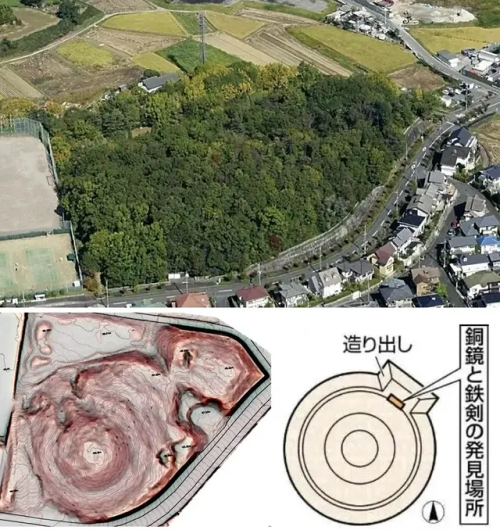

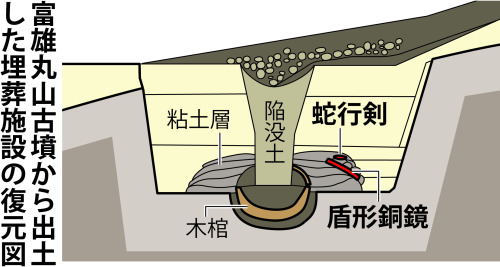

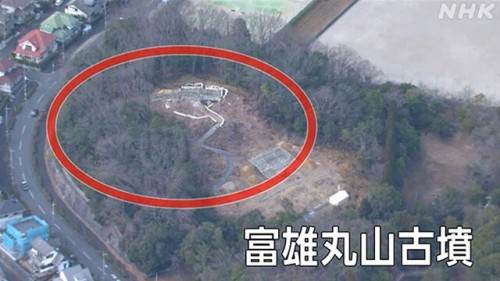
Sean bienvenidos japonistasarqueologicos, a una nueva entrega arqueológica del país del sol naciente, dicho esto pónganse cómodos que empezamos. - Se ha hallado un Haniwa con forma de instalación de primavera el cual ha sido encontrado, en la antigua tumba de Tomio Maruyama en la ciudad de Nara, posiblemente se trate de la más antigua de Japón. - El túmulo funerario de Tomio Maruyama en la ciudad de Nara, en el que se encontró el Haniwa, parece representar un edificio construido en un lugar donde se encuentran diversos manantiales de agua¿Se trata del haniwa más antiguo de Japón? sigan leyendo para saber la respuesta. - Se trataría de una pista para realizar festividades acuáticas, es el túmulo funerario redondo más grande de Japón construido en la segunda mitad del siglo IV después de nuestra era en plena protohistoria nipona. - Se encontró una haniwa con forma de casa cuadrada y con un lado de unos 30 centímetros, dentro de este haniwa, también hay un haniwa similar a un tanque que almacena agua.se encontró una haniwa con forma de casa cuadrada con un lado de unos 30 centímetros.Dentro de este haniwa, también hay un haniwa similar a un tanque que almacena agua. - ¿Se trata del haniwa más antiguo de Japón? la respuesta es sí, espero que os haya gustado y nos vemos en próximas publicaciones de japón que pasen una buena semana. - 日本の考古学者の皆さん、日出ずる国からの新しい考古学の連載にようこそ! どうぞ、ごゆっくりお過ごしください。 - 日本最古の古墳といわれる奈良市の丸山富雄古墳から、埴輪が発見された。 - 埴輪が発見された奈良市の丸山富雄古墳は、複数の湧水が見られる場所に建てられた建物のようです。 日本最古の埴輪なのでしょうか。 答えは続きを読むから。 - 埴輪は、日本の原始時代中頃の紀元4世紀後半に造られた日本最大の円墳である。 - 一辺が約30cmの四角い家の形をした埴輪が発見されました。この埴輪の中には、水を貯めるタンクに似た埴輪も入っています。 - 日本最古のはにわなのか? 答えはイエスです。 - Welcome to Japanesearchaeology, to a new archaeological installment of the country of the rising sun. That being said, make yourself comfortable and let's begin. - A Haniwa in the form of a spring installation has been found in the ancient tomb of Tomio Maruyama in the city of Nara, possibly the oldest in Japan. - Tomio Maruyama's burial mound in the city of Nara, where the Haniwa was found, seems to represent a building built in a place where various water springs are located. Is it the oldest haniwa in Japan? Keep reading to find out the answer. - It would be a track for holding aquatic festivities, it is the largest round burial mound in Japan built in the second half of the 4th century AD in the midst of Japanese protohistory. - A haniwa was found in the shape of a square house and with a side of about 30 centimeters, inside this haniwa, there is also a haniwa similar to a tank that stores water. A haniwa was found in the shape of a square house with a side of about 30 centimeters. centimeters.Within this haniwa, there is also a tank-like haniwa that stores water. - Is it the oldest haniwa in Japan? The answer is yes, I hope you liked it and see you in future posts from Japan, have a good week.



Sean bienvenidos japonistasarqueológicos a una nueva entrega de arqueología nipona, en la cual hablaremos de que alguien está invadiendo la Investigación, por sospecha de violación de la Ley de Protección de Bienes Culturales de la ciudad de Gyoda, prefectura de Saitama, dicho esto pónganse cómodos que empezamos. - El asalto se manifestó alrededor de las 11:00 a. m, del día 27 en Futagoyama el Kofun que se localiza en la ciudad de Gyoda. Se descubrió que alguien había perforado un agujero circular y un agujero rectangular de unos 120 cm de largo, 60 cm de ancho y 190 cm de profundidad. - La verdad esto es un sacrilegio hacer esto a un monumento, está totalmente prohibido escalar los monumentos, para eso podría irse a la montaña, ahora toca invertir enormes gastos por el daño invertido. - ¿Qué opinan ustedes? Espero que os guste y nos vemos en próximas publicaciones de Japón que pasen una buena semana. - 日本の考古学者を歓迎します。今回は、埼玉県行田市の文化財保護法違反の疑いで、「調査」に不法侵入した人についてお話しします。それでは、お楽しみのところ、始めましょう。 - 27日午前11時頃、行田市にある二子山古墳に踏み込みました。縦120cm、横60cm、深さ190cmほどの円形の穴と長方形の穴が何者かによって開けられたことが判明した。 - モニュメントにこんなことをするのは冒涜だ。モニュメントに登るのは完全に禁止されており、そのためには山に行けばいい。 - いかがでしょうか?私はあなたがそれを好きで、日本からの将来の記事であなたを参照してください、良い週を持っている願っています。 - Welcome Japanese archaeologists to a new installment of Japanese archaeology, in which we will talk about someone is invading the Investigation, due to suspected violation of the Cultural Property Protection Law of the city of Gyoda, Saitama prefecture, having said that, make yourself comfortable that we start. - The assault occurred around 11:00 a.m. m, on the 27th in Futagoyama the Kofun which is located in the city of Gyoda. It was discovered that someone had drilled a circular hole and a rectangular hole about 120cm long, 60cm wide and 190cm deep. - The truth is that it is a sacrilege to do this to a monument, it is totally prohibited to climb the monuments, for that you could go to the mountain, now it is time to invest enormous expenses for the damage incurred. - What do you think? I hope you like it and see you in future posts from Japan, have a good week.
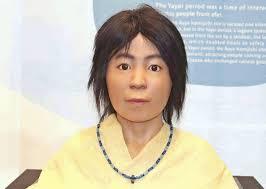




Sean bienvenidos amantes del mundo japonés a una nueva publicación, en este caso voy a dar mi opinión sobre uno de los hallazgos que se han hecho en el país del sol naciente y que tiene que ver con el rostro del niño reconstruido y de cómo la genética se aplica a la arqueología espero que os guste.
-
Antes que nada, el periodo yayoi abarca las siguientes fechas, 300a. C 300 d.C estas fechas son las tradicionales, aunque hay estudios más recientes del siglo IX antes de Cristo desde la península de Kyūshū, pero bueno, eso serán otras publicaciones que realizaré sobre el tema, pero en este caso nos vamos a centrar en este hallazgo este hombre se llama Aoya kamijiro.
-
Fue creado en octubre de 2021, ya que 1998 se encontraron unos restos arqueológicos de más de cien huesos humanos por lo cual es una tarea complicada, pero que nos permite reconstruir las facciones y no solo de la gente prehistórica, sino también de la propia historia como del mundo antiguo y de muchas épocas históricas.
-
Esto se obtiene a raíz de los huesos de los que se pueden extraer pequeñas muestras que son las que nos permitirán, saber si el individuo en cuestión era masculino era femenino y si padecía patologías.
-
Las nuevas tecnologías nos permitirán reconstruir fiel miente de alguna forma u otra el rostro, a la cual parece, ya que esto es un avance muy notable, tanto en la genética como en la arqueología porque podemos reconstruir bastante bien a la gente del pasado no sobre toda la población, que suele estar olvida en un segundo plano.
-
Espero que os haya gustado que pasen una buena semana.
-
日本を愛する皆さん、新しい出版物へようこそ。今回は、日出ずる国で行われた、復元された子供の顔と遺伝学に関係する発見の 1 つについて、私の意見を述べたいと思います。考古学にも応用できると思います。
-
まず、弥生時代は以下の300aの年代になります。 西暦 300 年頃 これらの日付は伝統的なものですが、九州半島からは紀元前 9 世紀に関するより最近の研究もありますが、それはまた別の出版物でこのテーマについて行う予定ですが、この場合は次のようにします。この発見に焦点を当ててください この男の名前は青谷神代です。
-
1998年に100体以上の人骨の考古学的遺跡が発見されて以来、この計画は2021年10月に作成された。そのため複雑な作業ではあるが、先史時代の人々の派閥だけでなく、古代世界や歴史上のさまざまな時代からの歴史そのものです。
-
これは骨から得られるもので、少量のサンプルを抽出することで、問題の人物が男性か女性か、また病状を患っていたかどうかを知ることができます。
-
新しいテクノロジーにより、何らかの方法で、その顔に見える顔を忠実に復元できるようになります。これは、遺伝学と考古学の両方において非常に注目に値する進歩です。なぜなら、私たちは過去の人々についてではなく、非常によく復元できるからです。国民全体が、通常は背景に隠れて忘れ去られています。
-
気に入っていただければ幸いです。良い一週間をお過ごしください。
-
Welcome lovers of the Japanese world to a new publication, in this case I am going to give my opinion on one of the discoveries that have been made in the country of the rising sun and that has to do with the reconstructed child's face and how genetics It applies to archeology. I hope you like it.
-
First of all, the yayoi period covers the following dates, 300a. C 300 AD These dates are the traditional ones, although there are more recent studies from the 9th century BC from the Kyūshū peninsula, but well, that will be other publications that I will make on the subject, but in this case we are going to focus on this discovery This man's name is Aoya kamijiro.
-
It was created in October 2021, since archaeological remains of more than one hundred human bones were found in 1998, which is why it is a complicated task, but it allows us to reconstruct the factions and not only of the prehistoric people, but also of history itself. as from the ancient world and from many historical periods.
-
This is obtained from the bones from which small samples can be extracted that will allow us to know if the individual in question was male or female and if he suffered from pathologies.
-
New technologies will allow us to faithfully reconstruct the face, in some way or another, to which it appears, since this is a very notable advance, both in genetics and in archeology because we can reconstruct quite well the people of the past not about the entire population, which is usually forgotten in the background.
-
I hope you liked it and have a good week.





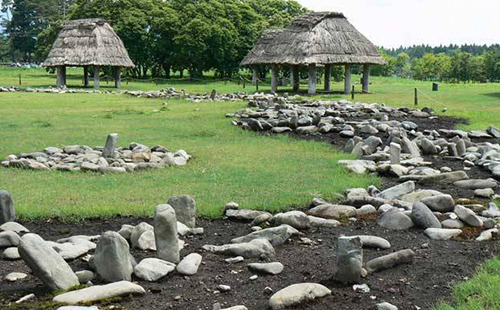
Sean bienvenidos, japonsitasarqueologícos a una nueva entrega en la que hablaremos de un Trending Topic, ya que el país del sol naciente está de moda pues le vamos a sacar beneficios y no es el único tema que están sabiendo explotar, para sacarle el mayor partido. - Lo que vengo a referirme, es que las modas son puro negocio, de lo más nocivo que nos podemos llevar a la cara, antes de que Japón estuviera de moda ya había muchos fakes, pero ahora se han duplicado e incluso triplicado. No hay que creerse todo lo que leamos por internet, siempre hay que cuestionarse las cosas, en este caso vamos a sentarnos, en dos monumentos uno localizado en Inglaterra y otro en japón. - El primero, se trata de stonehenge: Construido en el cuarto mileno 3100 antes de nuestra era, que cada vez se actualizan sus funciones la última más reciente es que no puede ser usado como un calendario solar. El segundo, se trata de Isedōtai site, localizado en la prefectura de Akita, en la región de Tōhoku en el noroeste de Japón, construido en el quinto milenio 4000 a.c en el jomon final. Se usó como calendario solar y posiblemente para los solsticios de verano e invierno. - El tema de esta publicación no es hablar de ninguno de los dos en profundidad, sino criticar a los lucidos, que sitúan stonehenge y Isedōtai site en la misma recta cronológica lo cual es una falacia por que hay por lo menos 1100 a 1500 años de diferencia aproximadamente entre ambas construcciones. - Ese es el problema del occidentalismo y eurocentrismo sobre todo la manía de colocarlo todo en una recta cronológica las fechas son algo aproximadas al igual que las rectas temporales. - Espero que os haya gustado y nos vemos en próximas publicaciones que pasen una buena semana.
Welcome, japonsitasarchaeologists, to a new edition in which we will talk about a Trending Topic, since the country of the rising sun is in fashion, we are going to make the most of it and it is not the only topic that they are knowing how to exploit, to make the most of it. - What I am referring to is that fashions are pure business, the most harmful thing we can take to our faces. Before Japan was in fashion there were already many fakes, but now they have doubled and even tripled. We should not believe everything we read on the internet, we should always question things, in this case we are going to sit on two monuments, one located in England and the other in Japan. - The first one is stonehenge: Built in the fourth millennium 3100 B.C., its functions are updated every time, the latest one is that it cannot be used as a solar calendar. The second is the Isedōtai site, located in Akita prefecture, in the Tōhoku region of northwestern Japan, built in the fifth millennium 4000 BC in the final jomon. It was used as a solar calendar and possibly for the summer and winter solstices. - The subject of this publication is not to discuss either in depth, but to criticise the lucid, who place stonehenge and Isedōtai site in the same chronological line which is a fallacy because there is at least 1100 to 1500 years difference approximately between the two constructions. - That is the problem of westernism and eurocentrism, especially the mania of placing everything on a chronological line, the dates are somewhat approximate, as are the time lines. - I hope you liked it and see you in future publications. Have a nice week.
旭日旗が流行しているので、それを最大限に利用するつもりだ。そして、彼らがそれを最大限に利用する方法を知っているのは、この話題だけではない。
私が言いたいのは、ファッションは純粋なビジネスであり、最も有害なものであるということだ。 日本が流行する前からすでに多くの偽物があったが、今では倍増し、3倍にもなっている。インターネット上の情報を鵜呑みにするのではなく、常に物事を疑ってみる必要がある。
ひとつはストーンヘンジで、紀元前3100年の第四千年紀に建てられた。 もうひとつは、東北地方の秋田県にある伊勢堂岱遺跡で、紀元前4000年、縄文末期の第5千年紀に作られた。
太陽暦として使われ、おそらく夏至と冬至にも使われた。
本書の主題は、どちらか一方を深く論じることではなく、ストーンヘンジと伊勢堂岱遺跡を同じ年代線上に置く明晰な人々を批判することである。
それが西洋主義とヨーロッパ中心主義の問題点であり、特にあらゆるものを年代順に並べようとするマニアの問題点である。
お気に召していただけたなら幸いである。 それではまた。

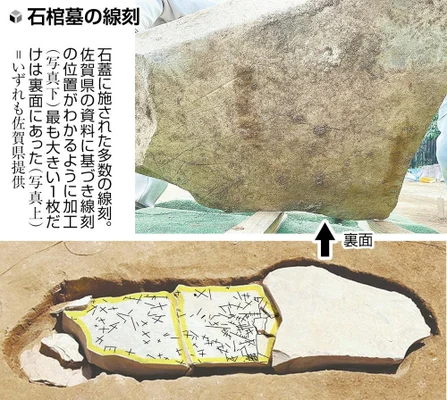



Sean bienvenidos, japonistasarqueológicos, a una nueva entrega de arqueología nipona, una vez dicho esto pónganse cómodos qué empezamos. - Nos volvemos a trasladar a la prehistoria japonesa que, cada día, nos sorprende con un nuevo hallazgo arqueológico. Las ruinas de Yoshinogari, datan del periodo Yayoi, pero en este caso del Yayoi tardio y se localizan en la prefectura de saga. - Se trata de una tumba de unos dos metros de largo¿Quién estaba enterrado en ella? Futuras investigaciones arrojarán luz. ¿Qué opinan ustedes sobre este hallazgo? - Os deseo una feliz semana y nos vemos en próximas publicaciones. 日本の考古学者たちよ、ようこそ!それでは、くつろいでいただき、始めましょう。 - 毎日、新しい考古学的発見で私たちを驚かせてくれる日本の先史時代へと話を戻します。吉野ヶ里遺跡は、佐賀県にある弥生時代後期の遺跡です。 - 古墳の長さは約2メートル。 誰が埋葬されていたのだろうか。この発見は、今後の研究によって明らかにされるでしょう。 あなたはどう思われますか? - それでは、今週もよろしくお願いします。また、今後の記事でお会いしましょう。 - Welcome, Japanese archaeologists, to a new instalment of Japanese archaeology, so make yourselves comfortable and let's get started. - We move back to Japanese prehistory, which surprises us every day with a new archaeological find. The ruins of Yoshinogari, dating back to the Yayoi period, but in this case to the late Yayoi period, are located in the prefecture of Saga. - The tomb is about two metres long. Who was buried in it? Further research will shed light on this discovery. What do you think about it? - I wish you a happy week and see you in future posts.


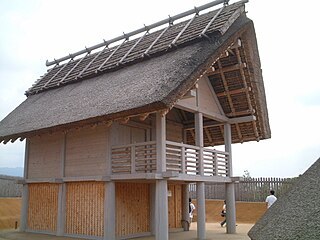



Sean bienvenidos, japonistasarqueológicos, a una nueva entrega de arqueología nipona, una vez dicho esto pónganse cómodos qué empezamos. - Nos volvemos a trasladar a la prehistoria japonesa que, cada día, nos sorprende con un nuevo hallazgo arqueológico. Las ruinas de Yoshinogari, datan del periodo Yayoi(III-IV) pero en este caso del Yayoi tardío y se localizan en la prefectura de Saga¿Cuándo llegó el arroz a japón? Y¿por dónde llegó? Hay dos teorías: una que llegó de china y la otra desde Corea hasta la isla de Kyushu a través del mar de Ariake. El enorme asentamiento está rodeado por tres fosos y es la raíz de los castillos en Japón, ha sido seleccionado como uno de los 100 castillos más famosos de Japón. - En el periodo Yayoi, se caracteriza porque es cuando aparecen las clases guerras y las clases dirigentes a raíz de la acumulación de poder, esto corresponde a los jefes locales, por ejemplo: La residencia de la clase dominante en el recinto interior sur, no confundir con realeza japonesa, hay que recordar que a los poblados se les instalaba un punto religioso, por aquella época predominaba el Sintoismo como: es el caso del santuario principal construido en el recinto interior norte. - El yacimiento cuenta con atalaya del recinto interior sur, de carácter defectivo, al sur se encuentra el pueblo con viviendas tipo foso y almacenes para guardar el arroz rojo que era el que se cultivaba en aquella época y en la ciudad de Karatsu, también en la prefectura de Saga, se encuentran las ruinas de Nabatake, las ruinas de cultivo de arroz más antiguas de Japón. - Durante el periodo Yayoi y Kofun tuvieron lugar una serie de migraciones desde la península de corea, esto trajo consigo que las poblaciones coreanas y japonesas de la zona se mezclaran generando mestizos, además de transmitir sus conocimientos de la agricultura. - Espero que os haya gustado y nos vemos en próximas publicaciones, que pasen una buena semana. Welcome, Japanese archaeologists, to a new instalment of Japanese archaeology, so make yourselves comfortable and let's get started. - We move back to Japanese prehistory, which surprises us every day with a new archaeological find. The ruins of Yoshinogari, dating from the Yayoi period (III-IV) but in this case from the late Yayoi period, are located in the prefecture of Saga When did rice arrive in Japan? And where did it arrive? There are two theories: one that it came from China and the other from Korea to the island of Kyushu via the Ariake Sea. The huge settlement is surrounded by three moats and is the root of castles in Japan, it has been selected as one of the 100 most famous castles in Japan. - The Yayoi period is characterised by the emergence of the warring and ruling classes as a result of the accumulation of power, this corresponds to the local chiefs, for example: The residence of the ruling class in the southern inner precinct, not to be confused with Japanese royalty, it should be remembered that the villages had a religious point installed, at that time Shintoism predominated, such as the main shrine built in the northern inner precinct. - The site has a watchtower in the southern inner enclosure, which is defective, to the south is the village with moat-like dwellings and warehouses for storing the red rice that was cultivated at the time, and in the town of Karatsu, also in Saga Prefecture, are the ruins of Nabatake, the oldest rice cultivation ruins in Japan. - During the Yayoi and Kofun period a series of migrations from the Korean peninsula took place, which resulted in the mixing of the Korean and Japanese populations in the area and the passing on of their knowledge of agriculture. - I hope you liked it and see you in future posts, have a good week.

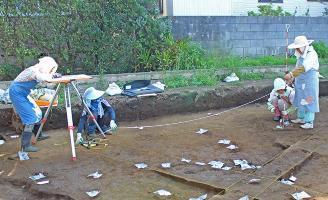
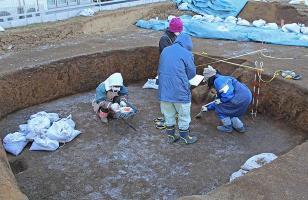

Sean bienvenidos japonistasarqueológicos, a una nueva entrega de arqueología japonesa, una vez dicho esto pónganse cómodos que empezamos. - Antes que nada:¿Qué entendemos por una excavación arqueológica? Consiste en extraer los restos materiales de las culturas del pasado a esto se le llama cultura arqueológica por ejemplo: los restos viviendas de fosa y hoyos. Los restos arqueológicos, se localizan en la Ciudad de Narashino, en la prefectura de Chiba, los restos podrían tratarse del periodo jomon (15.000/16.000 a.c) - Espero que os haya gustado y nos vemos en próximas publicaciones, que pasen una buena semana. - 日本の考古学者たちよ、ようこそ。そう言われたら、くつろいで、さっそく始めましょう。 - まず、考古学的発掘とはどういうことかというと、過去の文化の物質的遺構を取り出すことであり、これを考古学的文化と呼びます。例えば、竪穴住居跡やピット跡などです。千葉県習志野市にあるこの遺跡は、縄文時代(紀元前15,000~16,000年)のものと思われます。 - 気に入っていただけたでしょうか、また今後の記事でお会いしましょう、良い一週間をお過ごしください。 Welcome, Japanese archaeologists, to a new installment of Japanese archaeology, and once that's been said, make yourselves comfortable and let's get started. - First of all: What do we mean by an archaeological excavation? It consists of extracting the material remains of the cultures of the past, this is called archaeological culture, for example: the remains of pit dwellings and pits. The archaeological remains, located in Narashino City, Chiba Prefecture, may date back to the Jomon period (15,000/16,000 BC). - I hope you liked it and see you in future posts, have a nice week.





Sean bienvenidos japonistasarqueológicos, a una nueva entrega de arqueología japonesa, una vez dicho esto pónganse cómodos que empezamos. - En esta ocasión os voy a presentar al padre de la arqueología moderna japonesa Edward.S.Morse, zoólogo estadounidense del siglo XIX y gran apasionado por el mundo japonés, su hallazgo más relevante fue el montículo de conchas de Omori, cuando lo divisó desde el tren ha raíz de dicho hallazgo, fue venado descubrió la cultura prehistoria Jomon. - En la foto se puede apreciar el Montículo de conchas Omori en el momento de la excavación de Morse, en el año 1878 aproximadamente. ¿Lo conocían? - Espero que os haya gustado y nos vemos en próximas publicaciones, que pasen una buena semana. - 日本の考古学者たちよ、ようこそ。そう言われたら、くつろいで、さっそく始めましょう。 - 今回は、近代日本考古学の父、エドワード・S・モース(19世紀アメリカの動物学者で、日本の世界をこよなく愛した人物)を紹介します。彼の最も重要な発見は、大森貝塚で、汽車から貝塚を発見したとき、先史時代の縄文文化を発見したのです。 - 写真は、1878年頃、モースが発掘した当時の大森貝塚です。 ご存知でしたか? - 気に入っていただけたでしょうか、また今後の記事でお会いしましょう、良い一週間をお過ごしください。 - Welcome, Japanese archaeologists, to a new installment of Japanese archaeology, and once that's been said, make yourselves comfortable and let's get started. - On this occasion I am going to introduce you to the father of modern Japanese archaeology Edward.S.Morse, 19th century American zoologist and great enthusiast for the Japanese world, his most relevant find was the Omori shell mound, when he spotted it from the train, he discovered the prehistoric Jomon culture. - The photo shows the Omori shell mound at the time of Morse's excavation in about 1878. Did you know it? - I hope you liked it and see you in future posts, have a nice week.
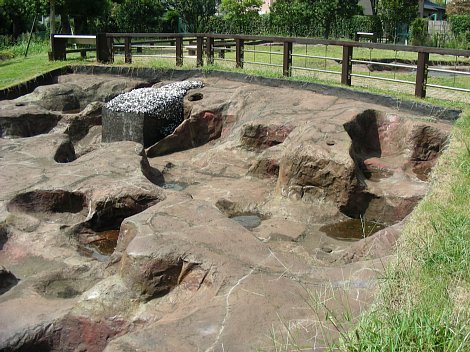





Sean bienvenidos japonistasarqueológicos, a una nueva entrega de arqueología japonesa, una vez dicho esto pónganse cómodos que empezamos. - En esta ocasión nos trasladamos: Al Museo del Parque Histórico Tobinodaique se localiza en la ciudad de Funabashi, prefectura de Chiba,los restos arqueológicos son del periodo Jomon y hay una 200 aproximadamente, en lo que respecta a las ruinas. Además las ruinas de Tobinodai tienen unos 8.000 años de antigüedad y son del período temprano.¿Conocían este yacimiento? - Espero que os haya gustado y nos vemos en próximas publicaciones, que pasen una buena semana. - 日本の考古学者たちよ、ようこそ。そう言われたら、くつろいで、さっそく始めましょう。 - 今回は移動します: 飛ノ台歴史公園博物館へ 千葉県船橋市にある飛ノ台歴史公園博物館は、縄文時代の遺跡で、遺跡としては約200件あります。 また、飛ノ台遺跡は約8,000年前の前期遺跡である。 - 気に入っていただけたでしょうか、また今後の記事でお会いしましょう、良い一週間をお過ごしください。 - Welcome, Japanese archaeologists, to a new installment of Japanese archaeology, and once that's been said, make yourselves comfortable and let's get started. - This time we move on: To the Tobinodaique Historical Park Museum is located in Funabashi City, Chiba Prefecture, the archaeological remains are from the Jomon period and there are about 200 of them, as far as ruins are concerned. In addition, the ruins of Tobinodai are about 8,000 years old and date back to the early period. - I hope you liked it and see you in future posts, have a nice week. Sources: Images owned by the museum Museum:Hinodai Shell Midden Museum. 出典:博物館所蔵の画像 博物館:日野台貝塚資料館

Sean bienvenidos, japonistasarqueológicos a una nueva entrega en esta ocasión os presento a otro arqueólogo que excavó en el yacimiento del Toro en la arqueología de posguerra. - En la publicación anterior comentamos, que era la arqueología de posguerra, mencionamos el milagro japonés y de cómo tras la guerra japón supo reponer sus heridas con cierta rapidez y el yacimiento del Toro es un testimonio de ello. En esta publicación, el personaje en esta ocasión se trata de,Takeji Kikukawa Nacido en 1932, que corresponde a la era Showa. - Fue estudiante de la escuela secundaria Fujieda Higashi localizada en la prefectura de Shizuoka, se dedicó a los periodo yayoi y Jamón estudiando su cultura material, sobre todo la cerámica del periodo yayoi y las pesas de piedra del periodo Jomon. - Espero que os haya gustado y nos vemos en próximas publicaciones que pasen una buena semana. 日本の考古学者たちよ、戦後の考古学で登呂遺跡を発掘したもう一人の考古学者を歓迎しよう。 - 前回は戦後考古学について、日本の奇跡と戦後日本がいかに早く立ち直ったか、そしてエル・トロ遺跡がその証であることをお話ししました。今回の登場人物は、1932年生まれの菊川武治である。 - 静岡県立藤枝東高等学校に在籍し、弥生・縄文時代の物質文化、特に弥生時代の陶磁器や縄文時代の石錘の研究に没頭した。 - それでは、また次回もお楽しみください。
Welcome, Japanese archaeologists, to another post-war archaeologist who excavated at the Toro site in post-war archaeology. - In the previous publication we talked about post-war archaeology, we mentioned the Japanese miracle and how after the war Japan was able to recover its wounds quite quickly and the site of El Toro is a testimony of that. In this publication, the character on this occasion is Takeji Kikukawa, born in 1932, which corresponds to the Showa era. - He was a student at Fujieda Higashi High School in Shizuoka Prefecture. He was devoted to the Yayoi and Jomon periods, studying their material culture, especially the ceramics of the Yayoi period and the stone weights of the Jomon period. - I hope you enjoyed it and see you in future posts have a nice week.

Sean bienvenidos, japonistasarqueológicos a una nueva entrega en esta ocasión os presento a uno de los arqueólogos que excavan en el yacimiento del Toro en la arqueología de posguerra. - ¿Qué es la arqueología de posguerra? Disciplina, que abarca la década de 1947-1999 tras la 2 guerra mundial, Japón se dedicó a realizar excavaciones en masa, además de salir de la situación de posguerra, mejorando el país e invirtiendo en el patrimonio cultural, para que la población estuviera entretenida con otros quehaceres por ejemplo en la década de los 50 surge el famoso milagro Japonés. - Nuestro personaje en esta ocasión se trata de, kenichi Miura nacido en 1932, después de la guerra en japón surge un movimiento llamado Bunka federación y todas las escuelas querían hacer algo por la cultura. Fue una gran labor por parte del país del sol naciente a pesar de la situación en la que se encontraba digno de administración. - Espero que os haya gustado y nos vemos en próximas publicaciones que pasen una buena semana. 日本の考古学者たちよ、戦後の登呂遺跡考古学の新連載へようこそ。 - 戦後考古学とは何か?第二次世界大戦後の1947年から1999年の10年間をカバーする学問分野であり、日本は戦後の状況を離れ、国を改善し、文化遺産に投資することに加えて、国民が他の仕事で楽しまれるように、大規模な発掘に専念していた、例えば、50年代の10年間で有名な日本の奇跡が生じた。 - 今回の登場人物は、1932年生まれの三浦健一です。 戦後、日本では文化連盟という運動が起こり、各学校が文化のために何かをしようとしました。日出づる國の行政にふさわしい状況にもかかわらず、これは偉大な仕事であった。 - それでは、また次号でお会いしましょう。 良い一週間を。 Welcome, Japanese archaeologists, to a new installment of the post-war archaeology of the Toro archaeological site. - What is post-war archaeology? Discipline, which covers the decade of 1947-1999 after World War II, Japan was dedicated to mass excavations, in addition to leaving the post-war situation, improving the country and investing in cultural heritage, so that the population was entertained with other tasks, for example in the decade of the 50's the famous Japanese miracle arose. - Our character on this occasion is Kenichi Miura, born in 1932. After the war in Japan, a movement called Bunka Federation arose and all the schools wanted to do something for culture. It was a great work on the part of the country of the rising sun in spite of the situation in which it found itself worthy of administration. - I hope you liked it and see you in the next publications. Have a nice week.
for more information/詳細については:https://www.shizuoka-toromuseum.jp/toro-site/people/people-intervew01/




Sean bienvenidos, japonistasarqueologicos, al segundo capítulo del japón prehistórico y seguir recorriendo sus lugares mitológicos y mágicos una vez dicho esto póngase comandos que empezamos. - Para continuar nuestro viaje, más vale tarde que nunca pero despacio y con buena letra. Nos trasladamos a Kuromatayama una montaña con forma de pirámide, que se localiza en la meseta de Nakadori en el distrito Towada Oyu de la ciudad de Kazuno , prefectura de Akita. - En la década de 1992,se realizó una encuesta académica y como resultado, aunque esta montaña actualmente está cubierta de tierra, se descubrió que era una estructura artificial de unos 7 a 10 niveles que llegaban desde la base hasta la cima. Además, se halló una cavidad a 10 metros por debajo de la cumbre, y es muy probable que alguien esté enterrado allí. - Espero que os haya gustado y nos vemos en próximas publicaciones mis amantes del mundo japonés, que pasen una buena semana. - 考古学者の日本主義者の皆さん、先史時代の日本の第 2 章へようこそ。神話と魔法の場所を旅し続けてください。そう言われたら、コマンドを入力して始めましょう。 - 旅を続けるには、遅刻しないよりはマシですが、ゆっくりと良い字で書きましょう。 秋田県鹿角市十和田大湯地区の中通高原にあるピラミッド型の山「黒俣山」へ移動します。 - 1992年代に学術調査が行われた結果、この山は現在は土で覆われているものの、麓から頂上まで7~10層程度の人工構造物であることが判明した。 また、山頂から10メートルほど下には空洞が発見されており、人が埋葬されている可能性が高い。 - 日本の世界を愛する皆さん、良い一週間をお過ごしください。 - Welcome, archaeological Japanists, to the second chapter of prehistoric Japan and continue touring its mythological and magical places. Once that has been said, put in commands and let's begin. - To continue our journey, better late than never but slowly and with good handwriting. We move to Kuromatayama, a pyramid-shaped mountain, located on the Nakadori Plateau in the Towada Oyu district of the city of Kazuno, Akita Prefecture. - In the 1992s, an academic survey was conducted and as a result, although this mountain is currently covered with earth, it was found to be an artificial structure of about 7 to 10 levels reaching from the base to the top. Additionally, a cavity was found 10 meters below the summit, and it is very likely that someone is buried there. - I hope you liked it and see you in future posts my lovers of the Japanese world, have a good week.




Sean bienvenidos, japonistasarqueológicos, a una nueva entrega de arqueología nipona, una vez dicho esto pónganse cómodos qué empezamos. — En la publicación anterior estuvimos hablando de las ruinas de Yoshinogari, que datan del período Yayoi (300-250) pero en este caso del Yayoi tardío y se localizan en la prefectura de Saga. Esta vez vamos a profundizar un poco más en dicho yacimiento. En la década de 1928-1986 y hasta el presente se han estado hallando restos arqueológicos nuevos. Pero las excavaciones y las investigaciones empezaron en 1928, esta fecha corresponde a la era taisho, también se realizaron excavaciones en Fukuoka la prefectura vecina, principalmente ligados a dos temas, la agricultura y la innovación industrial. En la prefectura de saga, se encontraron vasijas del periodo Yayoi, hasta del periodo Nara, hay que entender que el lugar ha podido ser utilizado en periodos históricos simultáneos, desde la prehistoria hasta nuestros días, como ya mencionamos anteriormente, el yacimiento se localiza cerca del mar de Ariake. A 3 kilómetros nos encontramos las ruinas de Mitsunagata, que estaría cerca de la puerta del parque arqueológico. - En la década de los años 50, se desentierran en las zonas de cultivos, ataúdes de tinajas. En 1928 aparecen: brazaletes de conchas y cuencos de vidrio. Pero no será hasta la década de los años 70 cuando se hacen excavaciones a gran escala, inclusive prospecciones, al noreste de Yoshinogari en las que se encontraron, espejos de bronce y armas de hierro. Se hallaron restos de edificios que se creen que son almacenes de piso elevado. 1980-1982, se excavó arroz carbonizado, esto nos permitirá saber cuál era la dieta y la procedencia del mismo. En 1986, por motivos industriales y por el canal de agua en la prefectura de Saga que comunica el río Chikugo, hasta el río Kase, esto desentierra restos de fosos y huecos de postes de madera. — Espero que os haya gustado y nos vemos en próximas publicaciones, que pasen una buena semana. - 日本の考古学者の皆さん、日本の考古学の新しい記事へようこそ。そうは言っても、気を楽にして始めましょう。 — 前回は、弥生時代(300~250年)、今回は弥生後期、佐賀県にある吉野ケ里遺跡についてお話しました。 今回はこの預金についてもう少し詳しく掘り下げていきます。 1928 年から 1986 年の 10 年間と現在に至るまでに、新しい考古学的遺跡が発見されています。 しかし、発掘調査が始まったのは大正時代にあたる1928年で、隣県の福岡でも主に農業と産業革新という2つのテーマに沿った発掘調査が行われました。 佐賀県では弥生時代から奈良時代の器物が出土しており、先史時代から現代に至るまでの同時期に使われていた可能性があることは、前述したとおりです。有明海の近く。 3キロほど離れたところに、遺跡公園のゲート付近にある三長田遺跡がある。 - 50年代の10年間に、栽培地域で壺の棺が発掘されました。 1928年に貝殻のブレスレットとガラスのボウルが登場しました。 しかし、吉野ヶ里の北東で測量を含む大規模な発掘が行われ、青銅鏡や鉄製の武器が発見されるのは70年代の10年になってからである。 高層倉庫とみられる建物跡が見つかった。 1980年から1982年にかけて焦げた米が発掘され、その食性や起源を知ることができます。 1986年、産業上の理由と、筑後川から嘉瀬川につながる佐賀県の水路の堀と木の柱穴の遺跡が発掘されました。 — 気に入っていただければ幸いです。今後の出版物でお会いしましょう。良い一週間をお過ごしください
Welcome, Japanese archaeologists, to a new installment of Japanese archaeology, having said that, make yourself comfortable and let's start. — In the previous post we were talking about the Yoshinogari ruins, which date from the Yayoi period (300-250) but in this case from the late Yayoi and are located in the Saga prefecture. This time we are going to delve a little deeper into said deposit. In the decade of 1928-1986 and up to the present, new archaeological remains have been found. But the excavations and investigations began in 1928, this date corresponds to the Taisho era, excavations were also carried out in Fukuoka the neighboring prefecture, mainly linked to two themes, agriculture and industrial innovation. In the prefecture of saga, vessels from the Yayoi period to the Nara period were found, it must be understood that the place could have been used in simultaneous historical periods, from prehistory to the present day, as we mentioned above, the site is located near of the Ariake Sea. 3 kilometers away we find the ruins of Mitsunagata, which would be near the gate of the archaeological park. - In the decade of the 50s, coffins of jars were unearthed in the cultivation areas. In 1928 they appear: shell bracelets and glass bowls. But it will not be until the decade of the 70s when large-scale excavations, including surveys, are made northeast of Yoshinogari in which bronze mirrors and iron weapons were found. Remains of buildings believed to be high-floor warehouses were found. 1980-1982, charred rice was excavated, this will allow us to know its diet and origin. In 1986, for industrial reasons and for the water channel in Saga Prefecture that connects the Chikugo River, to the Kase River, this unearths remains of moats and wooden post holes. — I hope you liked it and see you in future publications, have a good week.




Sean bienvenidos, japonistasarqueologicos, al tercer capítulo del Japón prehistórico y seguir recorriendo sus lugares mitológicos y mágicos, una vez dicho esto póngase comandos que empezamos. - Para continuar nuestro viaje, más vale tarde que nunca, pero despacio y con buena letra. Nos trasladamos al yacimiento arqueológico de Sannai Maruyama en la prefectura de Aomori, localizada en la región de Tōhoku. - La estructura, de madera, data del periodo jomon, es una estructura que funcionó como un gran calendario, ya que algo común que tienen todas las culturas en el mundo es adorar a las estrellas en lo que respecta a la prehistoria. El yacimiento data del 3900 a.c localizado a lo largo del río Okidate en la punta de una suave colina que se extiende desde las montañas Hakkoda. - En la década de 1992, tuvieron lugar las excavaciones que han desenterrado los restos de viviendas en pozos, tumbas de adultos, niños y los pozos de almacenamiento, entre otros rastros de la vida cotidiana. Además de una hay una gran cantidad de herramientas de loza de piedra. Se han excavado una gran variedad de huesos de pescado y de animales que indican hábitos alimenticios de aquella gente, también fueron encontrados frutos secos: como castañas y nueces. Además, se han desenterrado muchas reliquias orgánicas, como productos de madera, herramientas de hueso, canastas tejidas, así como artículos comerciales como jade, obsidiana de áreas remotas y asfalto. Hay una teoría: en Iwate se crean estructuras similares para realizar la danza de los ciervos ¿Qué opinan al respecto? _ Espero que os haya gustado y nos vemos en próximas publicaciones mis amantes del mundo japonés, que pasen una buena semana. - 考古学者の日本主義者の皆さん、先史時代の日本の第 3 章へようこそ、神話と魔法の場所を旅し続けてください。 - 旅を続けるには、遅刻しないよりはマシですが、ゆっくりと上手な字で。 東北地方にある青森県の三内丸山遺跡へ移動します。 - この木造建造物は縄文時代にまで遡り、先史時代から世界のどの文化にも共通して星を崇拝しており、偉大な暦として機能していた建造物です。 この遺跡は、八甲田山系から続くなだらかな丘陵の先端、沖館川沿いに位置し、紀元前 3900 年に遡ります。 - 1992 年代に発掘調査が行われ、井戸内の住居跡、大人、子供の墓、貯蔵穴、その他の日常生活の痕跡が発掘されました。 1 つ以外にも多数の石器の道具があります。 当時の人々の食生活を示す魚や動物の骨が多数出土しており、栗やクルミなどの木の実も出土しています。 さらに、木製品、骨道具、編んだかごなどの有機遺物や、翡翠、辺境の黒曜石、アスファルトなどの交易品も発掘されています。 岩手でも鹿踊りをするために同じような建物が作られているという説がありますが、どう思いますか? _ 日本の世界を愛する皆さん、良い一週間をお過ごしください。 - Welcome, archaeological Japanists, to the third chapter of prehistoric Japan and continue touring its mythological and magical places. Having said that, put yourself in command and let's begin. - To continue our journey, better late than never, but slowly and with good handwriting. We move to the Sannai Maruyama archaeological site in Aomori prefecture, located in the Tōhoku region. - The wooden structure dates back to the Jomon period, it is a structure that functioned as a great calendar, since something common that all cultures in the world have is worshiping the stars in regards to prehistory. The site dates back to 3900 BC located along the Okidate River at the tip of a gentle hill that extends from the Hakkoda Mountains. - In the 1992s, excavations took place that unearthed the remains of dwellings in wells, graves of adults, children and storage pits, among other traces of daily life. In addition to one there are a large number of stoneware tools. A wide variety of fish and animal bones have been excavated that indicate the eating habits of those people. Nuts such as chestnuts and walnuts were also found. In addition, many organic relics have been unearthed, such as wooden products, bone tools, woven baskets, as well as trade items such as jade, obsidian from remote areas, and asphalt. There is a theory: in Iwate similar structures are created to perform the deer dance. What do you think about it? _ I hope you liked it and see you in future posts my lovers of the Japanese world, have a good week.
